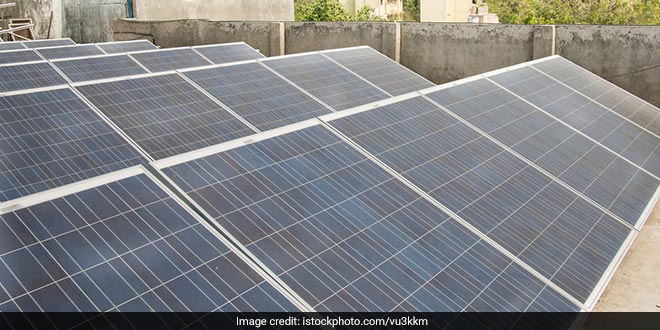Kolkata: Faced with challenges in penetrating the residential and the SME market space, the solar rooftop sector would fall short of its target of installing 40,000 megawatt (mw) capacity by 2022, say developers and experts. Research findings by consultancy firm Bridge to India indicate the rooftop solar market has grown rapidly at a compound annual growth rate (CAGR) of 88 percent in the last five years, mainly due to fast adoption by the corporate sector. The firm’s Managing Director Vinay Rustagi told IANS,
We estimate that the market added total capacity of about 1,500 mw over the last year, which should grow further to about 2,250 mw in 2019.
He prophesied that the country would end the target period of March, 2022, with a total rooftop capacity of about 15,000 mw – “way short of the target”.
Echoing Mr. Rustagi, another consultancy firm Mercom Capital Group’s CEO Raj Prabhu told IANS: “We don’t expect the rooftop installations to meet the target. Currently, our projection is the capacity will add up to about 15,000-20,000 mw by 2022. The year-over-year growth rate in rooftop solar space is higher, but actual installation numbers in megawatts are much lower compared to large-scale installations.”
Major drivers of India’s rooftop market are the “high electricity prices, especially for commercial and industrial consumers” which makes solar economically a better option, Mr. Prabhu said.
Also Read: Budget 2019: India’s Solar Generation Capacity Grew Over 10 Times, Says Union Minister Piyush Goyal
According to him, inconsistent power supply along with the installations, mandated on government buildings, was helping the rooftop market. Mr. Rustagi said,
Commercial and industrial consumers pay grid tariffs of upwards of Rs 7 per unit and can reduce their power bills by almost 50 per cent by using rooftop solar.
While the corporate sector was adopting solar rooftop as a tool to reduce their electricity cost, challenges lie in the residential and SME (small and medium enterprises) segment with limited financing options, lack of regulatory clarity. Cleantech Solar Director Anuvrat Joshi told IANS,
Lot of residential and SME projects are unable to draw financing and hence, they must be done on a capex (capital expenditure) basis. The lack of clarity and ease of implementation of regulations such as net metering combined with the lack of skilled and high quality vendors in the small installations business is a major hurdle for this segment.
Also Read: Indian Railways Planted Nearly One Crore Trees In 2018, Plans To Set Up 1000 MW Solar Power By 2020
According to CleanMax Solar’s Co-founder Andrew Hines, the residential and MSME segments are more challenging. Today, both these segments remain largely untapped, while in many other countries, they have emerged as important sources of growth.
In the rooftop segment, there is room for improvement in the regulatory environment. Net metering regulations are already in place in most states. However, these regulations include arbitrary technical constraints or project caps, which unnecessarily limit their effectiveness without any benefit to consumers.
A transparent and consumer-friendly feed-in-tariff for residential consumers would be the right trigger to spur growth in this segment, he said.
Despite a slow-down in growth of installation in the overall solar sector which struggled all through last year, on the back of policy and execution challenges, the rooftop market was exceptional as it is “not dependent on land or transmission availability” and hence, does not face the same operational challenges as large scale on-ground projects do.
Capex (capital expenditure) has been the preferred business model but the share of Opex based installations has risen steadily to 35 per cent, Mr. Rustagi said.
In the Opex model, third party investors own the rooftop solar system, take complete responsibility of building and operating it and sell on site power output to the consumer.
The advantage is that the consumer doesn’t have to pay upfront and also doesn’t bear any operational risk or responsibility. This model has been gaining in popularity, he said.
NDTV – Dettol Banega Swachh India campaign lends support to the Government of India’s Swachh Bharat Mission (SBM). Helmed by Campaign Ambassador Amitabh Bachchan, the campaign aims to spread awareness about hygiene and sanitation, the importance of building toilets and making India open defecation free (ODF) by October 2019, a target set by Prime Minister Narendra Modi, when he launched Swachh Bharat Abhiyan in 2014. Over the years, the campaign has widened its scope to cover issues like air pollution, waste management, plastic ban, manual scavenging and menstrual hygiene. The campaign has also focused extensively on marine pollution, clean Ganga Project and rejuvenation of Yamuna, two of India’s major river bodies.






























